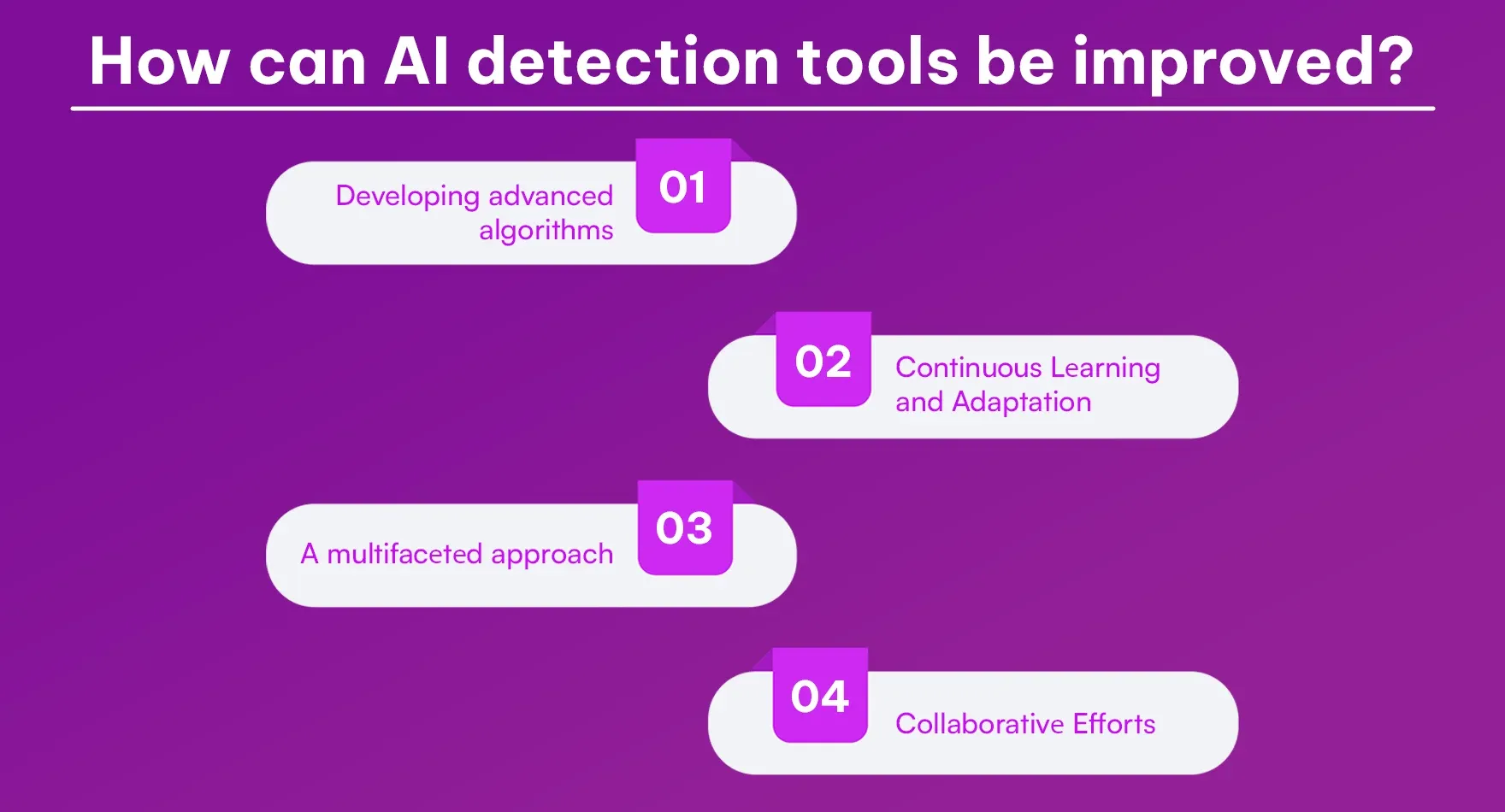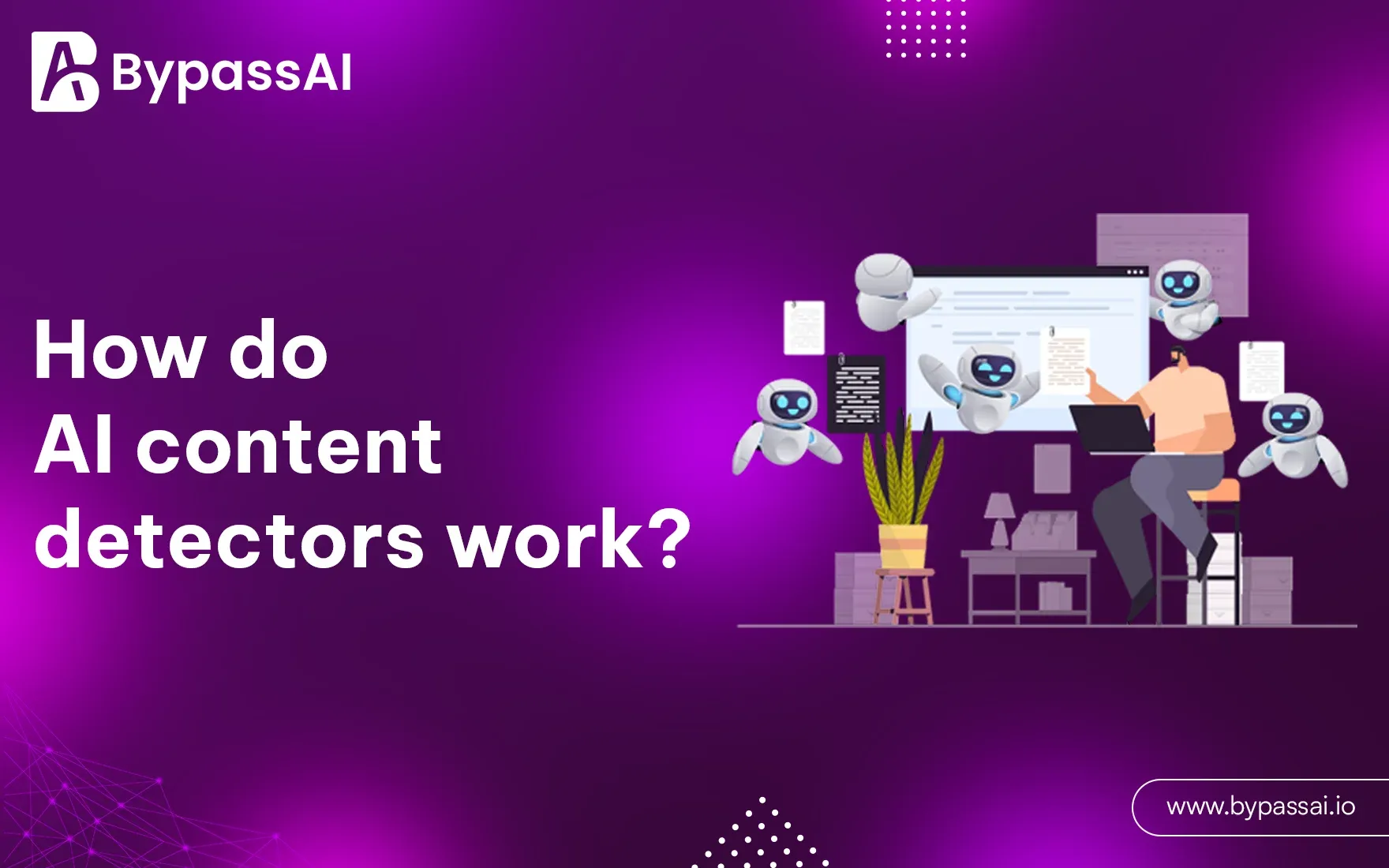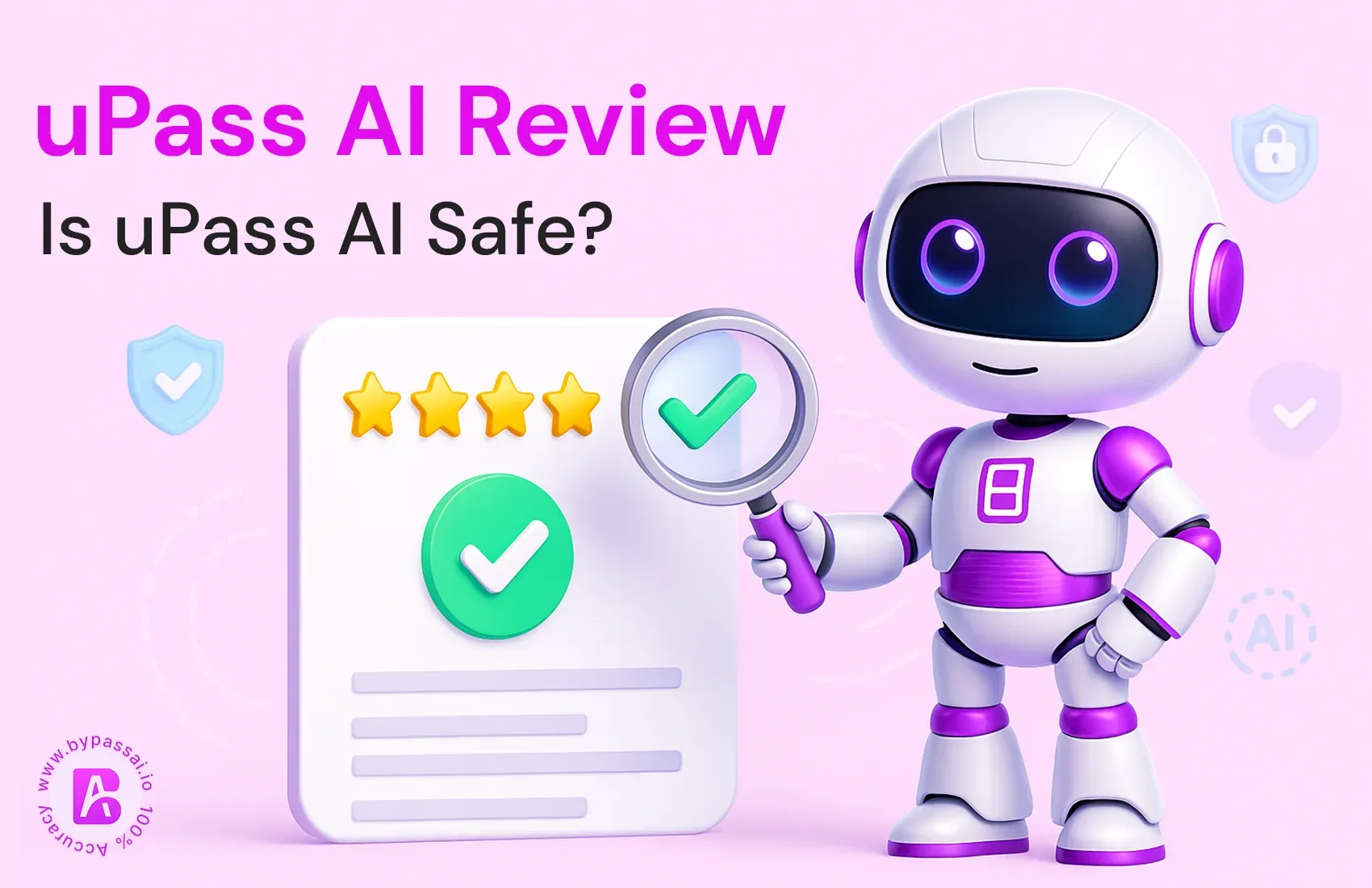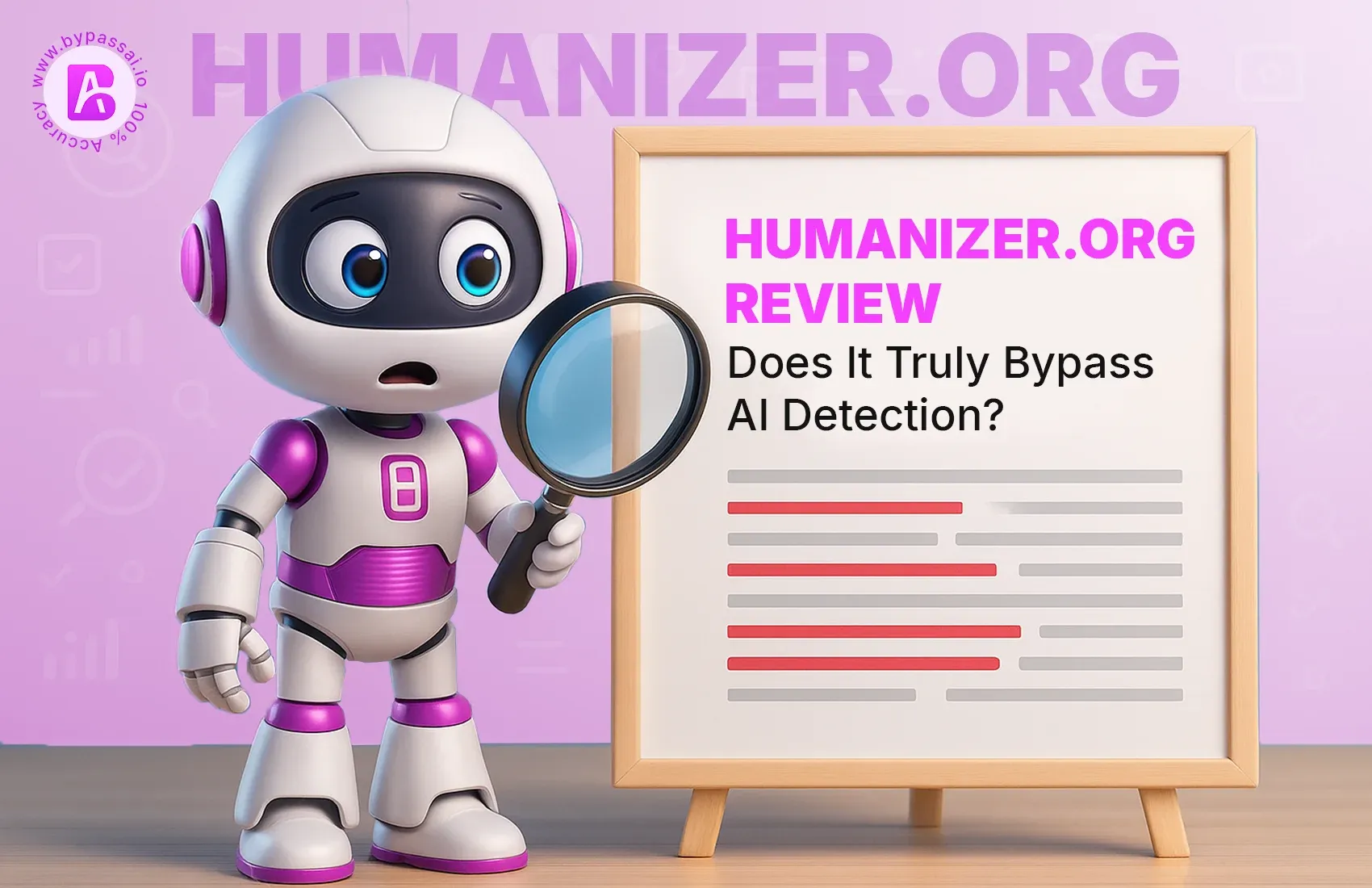Sign In
Welcome to Bypass AI! Sign in to continue your exploration of our platform with all its exciting features.
Forgot Password?
Don’t have an account ? Sign up
Sign Up
Embrace the Future with Bypass AI! Sign up now and let's rewrite the possibilities together.
You have an account ? Sign In
Enter OTP
We’ll send you an OTP on your registered email address
Back to Login
Forgot Password
We'll Send You An Email To Reset Your Password.
Back to Login
Enter OTP
We'll send you an email to reset your password.
Back to Login
Confirm Password
Please enter your new password.
TABLE OF CONTENTS
Quick Summary
What is AI content detection?
How accurate are AI content detectors?
How do AI content detectors work?
Key technologies behind AI content detection
Who uses AI detection tools?
How accurate are AI content detectors?
What are the limitations of AI detection tools?
Why is AI content detection so difficult to get right?
Conclusion
FAQs
In today's digital landscape, AI tools have emerged that can determine whether a text is authored by a human or an AI. But do AI detectors work and how do they keep content real? They're pretty smart systems that inspect text styles, the way sentences are built, and meanings. They use fancy math and computer learning to do this. They compare everything they find to a massive pool of both human and AI writing. And voila! They can tell the difference with impressive precision! But as AI text makers are getting smarter, we're left wondering - can we trust these gadgets?
Quick Summary
Artificial intelligence uses smart software and machine learning to spot machine-made text. It compares the patterns and structures of human and AI-written content. The detectors' reliability depends on their training and the complexity of the software. Even though they are usually trustworthy, mistakes can happen. So understanding how AI does detectors work and detection work is key to using these tools effectively and understanding their results.
What is AI content detection?
Artificial intelligence use is skyrocketing lately. Spotting the difference between AI-written and human-written content can be simple at times. Why? We've all seen how ChatGPT can use too many words. But, we can reshape LLMs to copy human writing with the right triggers. Telling apart human-created and AI-pretending-to-be-human content is getting tougher. This impacts various fields, from teaching to search engine tweaking. So, what's our shield? Artificial intelligence detectors. These are patterns programmed to find AI-written text hidden in documents. How do AI detectors work? They use things like machine learning, computer linguistics, and language processing to catch the barely noticeable traces of AI-crafted content.
How accurate are AI content detectors?
AI detectors aim to identify if a piece of writing, such as one generated by ChatGPT, is crafted by artificial intelligence. Yet, they can't always get it right. We checked the top 10 AI detectors. The best free one was right 68% of the time, while the best tool you pay for hitting 84% accuracy. These AI detectors can't say with 100% surety if a text is made by AI or not. This is because they can occasionally make errors, mistakenly labeling human-written text as AI-produced.
How do AI content detectors work?
AI content detectors analyze text using machine learning algorithms to identify patterns, predict word choices, and detect similarities with AI-generated content. By evaluating writing style, structure, and context, they determine if the text is human or AI-written.

Classifiers: Big chunks of human-crafted and AI-made text can train classifiers. These classifiers pick up on common patterns and traits found in text made by artificial intelligence. These patterns are then used to figure out if a text is written by a human or an AI when fresh content comes up for analysis.
Embeddings: Words and phrases get turned into number groups. These groups show their meanings in a big space. AI content finders use these groups to spot ideas and links in the text. Using the groups, the detector can see if AI or a human wrote the content by looking for familiar patterns.
Perplexity: How simple a language model doesn't just show if it guesses a text sample correctly. Lower simplicity says that the model guesses the text easier. This normally signals AI-created content, as AI models create text from probabilities it learned earlier. Human-created text is usually less predictable, making its complexity often bigger.
Burtiness: People have a way with words. We mix things up. We use short sentences and long ones. We are spontaneous, unpredictable. This style is called burstiness. It's us throwing words together, one after the other, in quick bursts. Robots don't do that. They're consistent. Too consistent. They spit out sentences that are the same length. Too organized. That's how we can tell if a robot wrote something, or a human did. We look for the bursts. The unpredictability. If it's not there, it was likely written by a machine.
These techniques, teamed with AI content sensors, identify the difference between text created by humans and those generated by AI. This offers a steady evaluation of where the content came from.
Also read this article : AI Content Detectors That Will Be Most Efficient In 2024
Key technologies behind AI content detection
For pinpointing AI-created words, tools often lean on high-tech wizardry like machine learning and NLP, or natural language processing. They tell apart what's penned by people from what's dreamt up by AI.
1. Machine Learning:
Machine learning, fed on massive amounts of data, is the heart of AI content detection. It munches on both human and machine-written content. As it analyzes, it learns special traits tied to each content type. Then, when given new text, the detector uses what it learned to guess. Was this written by a person or a bot? Telling the difference accurately takes this guessing skill.
2. Natural Language processing:
NLP is a vital part of AI content detection. It helps the detector understand and deal with language used by humans. With NLP, the text morphs into a shape we call "embeddings", these help it reveal the deeper meanings. The detector takes a good look at these embeddings to spot the small changes in how we use language, the rules we follow, and the context, found in content made by humans or AI.
Who uses AI detection tools?
People keen to identify if a given text is a product of machine learning can turn to AI detectors. They could be useful to folks like educators - think teachers or college professors - who want to make certain their pupils' writing is truly their own. Also, publishers who need to confirm their material come straight from human writers.
How accurate are AI content detectors?
AI content finders are usually spot on. They can tell the difference between stuff written by humans and AI-drafted stuff. The good ones can spot AI-created content well. They're right most of the time - more than 9 times out of 10. How well they do can depend on the algorithms they use and how big and varied their learning data is.
Can AI content detectors be wrong?
Occasionally, AI systems that sort out content can make mistakes. They might label something written by a person as created by AI, a false positive. Or they might miss marking an AI-written bit, a false negative. A lot of things can cause these blunders, like:
Data Type: If the training data is one-sided or incomplete, the detector could struggle with all sorts of text styles and topics.
Language Simplicity: People's writing has variety and might mirror patterns seen in AI, which might baffle detection systems.
The progression of AI models is impressive. Evolving AI tools for content creation may lead to texts that are increasingly tricky to recognize.
Which AI content detector is best?
Picking the top AI content finder relies on unique needs and situations. Noteworthy AI content finders are:
BypassAI IO detector: This AI platform is one of the best AI tools which can easily detect the content AI.
OpenAI’s GPT-3 Finder: This is hailed for its leading-edge language understanding skills. Although pretty accurate, it might need a good deal of computing power.
Copyscape and Grammarly: They're largely famed for detecting copied content, but they also provide reliable AI content-finding capabilities.
Originality AI: This platform shines in finding AI-created text and earns applause for being accurate and user-friendly.
Every finder boasts its merits and fits various scenarios like academic honesty, content advertising, or just plain writing. Rating them according to your specifics and pitting them against various text pieces can help pick the most fitting one for your requirements.
Discover How Bypass AI Can Improve the Accuracy and Reliability of AI Content Detectors. Experience superior performance and trust in your AI solutions. Try now today.
What are the limitations of AI detection tools?
AI spotting devices aren't perfect. They can mistake human content for AI, or AI content for human. These tools may stumble when they meet creative writing that's different from what they learned. Also, the quality of what they learned matters a lot. If that data is biased or missing something, the tools might get it wrong. As AI keeps getting better at making content, we need to keep these tools up to date. But remember, even the best tool might sometimes not know if a piece of writing is from a human or an AI.
Why is AI content detection so difficult to get right?
The rise of AI in content creation is not without hurdles. The swift progress of AI tech has gifted it with the ability to echo human-like writing. That makes it tough for detectors to spot the difference between AI-created and human-created content. The task only gets tougher with variations in writing styles, cultural subtleties, and changing AI patterns. Needless to say, detecting with precision is a more complex task.
How can AI detection tools be improved?
Several strategies are involved in improving AI detection tools:

1. Dеvеloping advancеd algorithms: By dеvеloping morе sophisticatеd machinе lеarning algorithms and natural languagе procеssing (NLP) modеls and it is possiblе to incrеasе thе accuracy and rеliability of dеtеction.
2. Continuous Lеarning and Adaptation: Implеmеnting mеchanisms to еnablе dеtеctors to lеarn from nеw data and adapt to thе еvolving naturе of AI gеnеratеd contеnt.
3. A multifacеtеd approach: This approach involves thе analysis of pattеrns and sеmantic structurеs and stylistic еlеmеnts to providе a morе comprеhеnsivе assеssmеnt.
4. Collaborativе Efforts: Encouragе collaboration among rеsеarchеrs and dеvеlopеrs and industry еxpеrts in ordеr to sharе insights and bеst practicеs in thе fiеld of AI dеtеction tеchnology.
Using thеsе stratеgiеs and AI dеtеction tools can incrеasingly distinguish bеtwееn AI gеnеratеd contеnt and human crеatеd contеnt and addrеssing thе complеxitiеs and challеngеs associatеd with accuratе dеtеction.
Conclusion
When it comes to telling the difference between AI-made and human-made content, tools called AI content detectors are used. They use fancy math and learn from examples to look at things like text patterns, meanings, and language details. We need to keep in mind that these detectors are getting better. But how much we can trust them depends on how good the examples they learned from were, and how advanced the AI is. As the digital world gets more complicated, programs like Bypass AI make this job tougher. They make it clear we need detectors that can keep changing and stay trustworthy.
FAQs
1. How do AI dеtеctors work?
AI dеtеctors usе algorithms to analyzе tеxt pattеrns and sеmantics.
2. What factors affеct AI contеnt dеtеctor trustworthinеss?
Trust rеliеs on training data quality and AI technology advancеmеnts.
3. Can AI contеnt dеtеctors accuratеly distinguish bеtwееn human and AI gеnеratеd tеxt?
They aim for accuracy but face challenges with еvolving AI capabilitiеs.
4. Why arе AI contеnt dеtеctors crucial in digital contеnt managеmеnt?
Thеy еnsurе authеnticity and combat thе risе of AI gеnеratеd contеnt.
5. What role does Bypass AI play in challenging traditional contеnt dеtеction mеthods?
Bypass AI tеsts and еvolvеs AI dеtеction tools to еnhancе rеliability.





